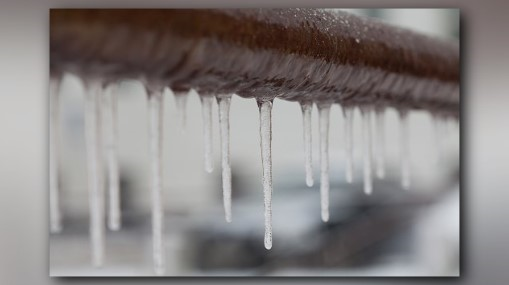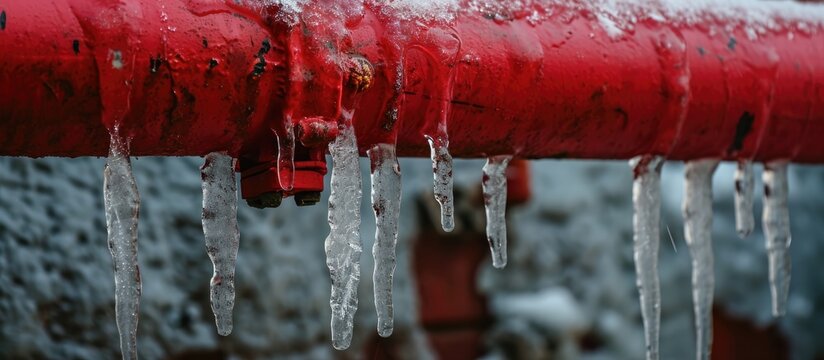Avoiding Frozen Pipes: Effective Methods for Winter
Avoiding Frozen Pipes: Effective Methods for Winter
Blog Article
We've encountered the article involving 6 Ways to Prevent Frozen Pipes listed below on the net and think it made good sense to quickly share it with you here.

Cold weather can wreak havoc on your plumbing, specifically by freezing pipelines. Here's exactly how to stop it from happening and what to do if it does.
Introduction
As temperatures decline, the risk of frozen pipes boosts, potentially causing pricey repairs and water damages. Recognizing how to prevent frozen pipes is important for property owners in cold climates.
Understanding Frozen Pipelines
What creates pipes to freeze?
Pipelines ice up when subjected to temperatures listed below 32 ° F (0 ° C) for extended durations. As water inside the pipes freezes, it increases, taxing the pipeline walls and possibly creating them to rupture.
Risks and damages
Icy pipes can lead to water disruptions, property damages, and costly repairs. Ruptured pipes can flooding homes and create extensive architectural damage.
Indications of Frozen Piping
Recognizing frozen pipelines early can stop them from bursting.
Just how to identify icy pipelines
Search for lowered water flow from faucets, uncommon odors or noises from pipes, and visible frost on subjected pipelines.
Avoidance Tips
Protecting prone pipelines
Cover pipelines in insulation sleeves or use heat tape to secure them from freezing temperature levels. Focus on pipes in unheated or exterior areas of the home.
Heating methods
Keep indoor areas sufficiently heated up, specifically locations with plumbing. Open up cupboard doors to allow cozy air to distribute around pipelines under sinks.
Shielding Exterior Pipes
Garden hose pipes and exterior taps
Detach and drain pipes yard pipes before winter season. Install frost-proof faucets or cover outside faucets with shielded caps.
What to Do If Your Pipes Freeze
Immediate actions to take
If you believe icy pipes, maintain faucets open to relieve stress as the ice melts. Utilize a hairdryer or towels soaked in warm water to thaw pipes slowly.
Long-Term Solutions
Structural modifications
Take into consideration rerouting pipelines far from outside wall surfaces or unheated locations. Include extra insulation to attics, basements, and crawl spaces.
Updating insulation
Invest in top notch insulation for pipelines, attic rooms, and walls. Appropriate insulation helps maintain consistent temperatures and reduces the threat of icy pipelines.
Verdict
Protecting against icy pipes requires proactive actions and fast reactions. By understanding the reasons, indications, and preventive measures, homeowners can protect their pipes during winter.
5 Ways to Prevent Frozen Pipes
Drain Outdoor Faucets and Disconnect Hoses
First, close the shut-off valve that controls the flow of water in the pipe to your outdoor faucet. Then, head outside to disconnect and drain your hose and open the outdoor faucet to allow the water to completely drain out of the line. Turn off the faucet when done. Finally, head back to the shut-off valve and drain the remaining water inside the pipe into a bucket or container. Additionally, if you have a home irrigation system, you should consider hiring an expert to clear the system of water each year.
Insulate Pipes
One of the best and most cost-effective methods for preventing frozen water pipes is to wrap your pipes with insulation. This is especially important for areas in your home that aren’t exposed to heat, such as an attic. We suggest using foam sleeves, which can typically be found at your local hardware store.
Keep Heat Running at 65
Your pipes are located inside your walls, and the temperature there is much colder than the rest of the house. To prevent your pipes from freezing, The Insurance Information Institute suggests that you keep your home heated to at least 65 degrees, even when traveling. You may want to invest in smart devices that can keep an eye on the temperature in your home while you’re away.
Leave Water Dripping
Moving water — even a small trickle — can prevent ice from forming inside your pipes. When freezing temps are imminent, start a drip of water from all faucets that serve exposed pipes. Leaving a few faucets running will also help relieve pressure inside the pipes and help prevent a rupture if the water inside freezes.
Open Cupboard Doors
Warm your kitchen and bathroom pipes by opening cupboards and vanities. You should also leave your interior doors ajar to help warm air circulate evenly throughout your home.

I ran across that post on Winter Plumbing Precautions: Preventing Frozen Pipes while doing a search on the web. Enjoyed our content? Please share it. Let others check it out. We take joy in reading our article about Helpful Tips to Prevent Frozen Pipes this Winter.
Or Book Technician Here Report this page